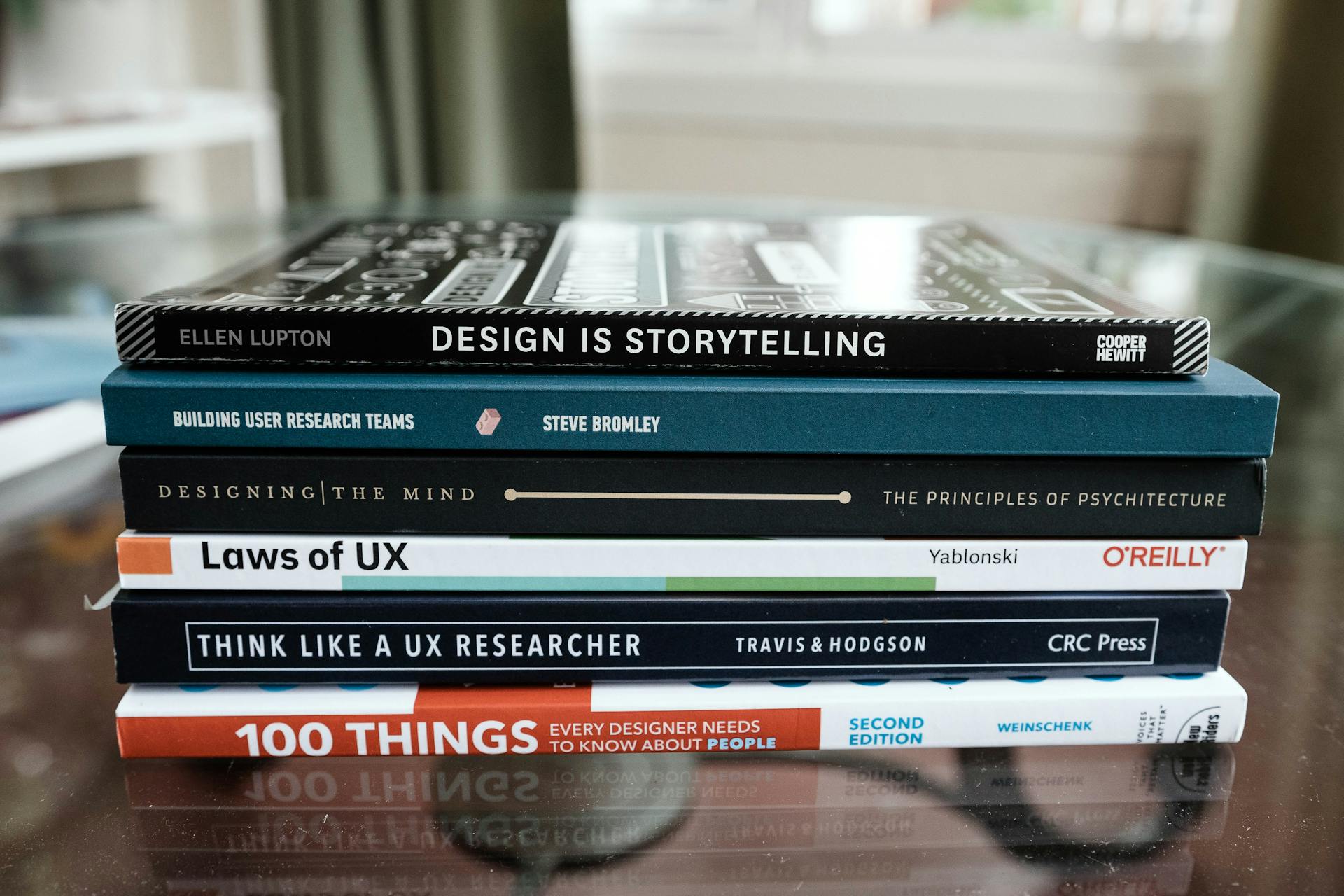
Ray Dalio, the founder of Bridgewater Associates, is a renowned investor and entrepreneur who has spent decades developing a set of principles for effective leadership and teams. His principles are based on his own experiences and observations, and they're surprisingly simple yet powerful.
One of Dalio's key principles is to be open to new ideas and perspectives. He encourages leaders to seek out diverse viewpoints, even if they challenge their own assumptions. This approach has been instrumental in Bridgewater's success, as it fosters a culture of innovation and continuous learning.
Effective leaders must also be willing to confront their own biases and flaws. Dalio advocates for regular self-reflection and a willingness to admit when you're wrong. He calls this "radical openness", and it's essential for building trust and credibility with your team.
Dalio's principles emphasize the importance of clear communication and transparency. He believes that leaders should be explicit about their goals, expectations, and decision-making processes. This helps to prevent misunderstandings and ensures that everyone is working towards the same objectives.
Here's an interesting read: Bridgewater Associates Principles
Principles for Success

To achieve success, it's essential to understand the principles that drive it. These principles are rooted in the biology of the human brain, specifically the interaction between the primitive brain and the rational brain.
The ego barrier is a significant obstacle to success, rooted in our primitive brain's fear of mistakes and weaknesses. This barrier can be overcome by being aware of what our primitive brain is saying and learning to ignore its unhelpful messages.
Our blind spots are areas where our way of thinking prevents us from seeing things accurately. These blind spots can be overcome by teaching our brain to work in ways that don't come naturally, using compensating mechanisms, or relying on the help of others.
To achieve success, we need to follow a structured process. Ray Dalio's 5-Step Process is a powerful tool for getting what we want out of life. This process involves setting clear goals, identifying problems that stand in our way, diagnosing root causes, designing plans, and executing them.

Here are the five steps of the 5-Step Process:
- Set clear goals
- Identify the problems that stand in your way
- Accurately diagnose the problems to get at their root causes
- Design plans that will get you around them
- Do what's necessary to push these designs through to results
By following these principles and using the 5-Step Process, we can overcome our ego barriers, blind spots, and other obstacles to achieve success and live a fulfilling life.
Understanding People and Teams
Understanding People and Teams is crucial for success, and it starts with recognizing that great people are the foundation of a great culture. Almost everything good comes from having great people operating in a great culture, so it's essential to match the person to the design.
To do this, you need to know the strengths and weaknesses of yourself and others, just like how we all have different physical attributes. The Myers-Brigg test is a free tool that can help you understand five main attribute spectrums. By understanding these differences, you can better predict behavior and outcomes.
In hiring, it's essential to think through what values, abilities, and skills you're looking for, and weigh values and abilities more heavily than skills. Write the profile of the person you're looking for into the job description, and look for people who have lots of great questions and sparkle. Don't hire people just to fit the first job they'll do at Bridgewater; hire people you want to share your life with.
People Are Built Differently

Different people are wired to think and see the world in unique ways, making them suitable for different jobs. For example, someone who naturally sees the big picture may have difficulty with small details, while someone who is strong at thinking logically may miss out on emotional cues. This is because everyone's brains are wired differently, and these differences can be both strengths and weaknesses.
To understand these differences, you can use personality assessment tests and quality reflections on experiences. The Myers-Brigg test, for instance, looks at five main attribute spectrums. By knowing the strengths and weaknesses of yourself and others, you can better predict their behavior and how well they'll do certain things.
It's essential to recognize that different ways of thinking and seeing make people suitable for different jobs. This means that you should match the person to the design and choose those who understand the difference between goals and tasks to run things. By doing so, you'll be more likely to get the right people in the right jobs and clearly assign responsibilities.

Here are some key differences to consider:
By understanding these differences and being aware of your own strengths and weaknesses, you can build a more effective team and achieve your goals.
Diagnose to Understand Underlying Issues
Problems are just manifestations of their root causes, so it's essential to diagnose to understand what the problems are symptomatic of. Recognize that diagnosis is foundational to progress and quality relationships.
To diagnose effectively, ask the right questions. The following questions can help you get started: What is the root cause of this problem? Is it a capacity issue or a capability issue? To distinguish between the two, imagine how the person would perform at that particular function if they had ample capacity.
A root cause is not an action, but a reason. For example, if you missed a train, the proximal cause might be that you forgot to check the schedule, but the root cause is that you are forgetful. Knowing what someone is like will tell you what you can expect from that person.

To make a proper diagnosis, you need a quality, collaborative, and honest discussion to get at the truth. This might involve asking questions like "What happened?" or "Why did this happen?" and actively listening to the responses.
A key point to remember is that diagnoses should produce outcomes. In other words, a diagnosis should lead to some kind of action or solution. Don't just diagnose a problem without thinking about how you can fix it.
Here are some key principles to keep in mind when diagnosing:
- A root cause is an adjective, not an action.
- A proper diagnosis requires a quality, collaborative, and honest discussion.
- Diagnoses should produce outcomes.
- Don't make too much out of one "dot" - synthesize a richer picture by squeezing lots of "dots" quickly and triangulating with others.
- Maintain an emerging synthesis by diagnosing continuously.
Decision Making and Problem Solving
Decision making and problem solving are crucial skills for achieving success. The 5-Step Process is a framework for making decisions effectively, which involves setting clear goals, identifying problems that stand in your way, diagnosing root causes, designing plans to get around those problems, and executing and pushing through to results.
The 5-Step Process is a loop, where once you achieve your goals, you'll naturally set your sights on the next goal. It's essential to prioritize and focus on the big problems that have the largest returns. Don't be afraid to identify problems, as they're potential improvements waiting to be discovered and implemented.

To diagnose problems, it's crucial to understand the root causes, which are adjectives, while proximal causes are verbs. For example, forgetting to check the train is a proximal cause, while being forgetful is the root cause. Acknowledging your weaknesses is not the same as surrendering to them; it's the first step toward overcoming them.
Here are the 5 key steps to make decisions effectively:
- Set clear goals
- Identify problems that stand in your way
- Diagnose root causes to those problems
- Design plans to get around those problems
- Execute and push through to results
Make Decisions Logically
Making decisions logically is crucial for achieving success in both personal and professional life. It's essential to consider both the probabilities and payoffs of the consequences of our decisions.
The 5-Step Process, as outlined in Principle 2, is a great framework for making decisions logically. It involves setting clear goals, identifying problems, diagnosing root causes, designing plans, and executing those plans. By following this process, we can ensure that our decisions are based on a clear understanding of the problem and the potential solutions.

In order to make decisions effectively, we need to use principles to systematize our decisions. This means documenting our principles and applying them to new situations. Logic is our best tool for understanding reality, while harmful emotions can be our biggest enemy.
It's also essential to remember the 80/20 Rule, which states that 80% of results come from 20% of efforts. This means that we should focus on the most important things first and deal with the unimportant things later.
Here are the 5 key factors to consider when making decisions:
- Set clear goals
- Identify problems
- Diagnose root causes
- Design plans
- Execute plans
By following these steps and considering the key factors, we can make decisions that are based on logic and reason, rather than emotions or intuition. This will help us achieve our goals and overcome obstacles more effectively.
Embrace Reality
Embracing reality is key to effective decision making and problem solving. We need to face our weaknesses and the difficulties of our situation rather than turning a blind eye towards them.

To do this, we must observe the rules of life and nature. Anything in excess becomes unfavorable, so we need to strike a balance in all aspects of our lives.
Focusing on what we can control is crucial in dealing with reality. Instead of complaining about things outside our control, we should own our outcomes and take responsibility for our actions.
This mindset shift can be challenging, but it's essential for making informed decisions and solving problems effectively. By accepting reality, we can begin to find solutions to the challenges we face.
Highlights
Ray Dalio's book, "Principles", is a bestseller with over 5 million copies sold. It's been praised for being both instructive and moving, making it a valuable resource for anyone looking to improve their decision making and problem solving skills.
The book has been a huge success, with 592 pages of practical advice and real-world examples. As the founder of Bridgewater, one of the largest and best-performing hedge funds in the world, Dalio has a proven track record of making informed decisions and solving complex problems.
Here are some key takeaways from Dalio's book:
- Principles-based decision making can lead to better outcomes.
- A systematic approach to problem solving can help you stay focused and avoid common pitfalls.
- Learning from others, including their successes and failures, can be a valuable part of the decision making process.
Effective Communication and Feedback

Effective communication and feedback are crucial to achieving success, and Ray Dalio emphasizes the importance of being open to feedback. He encourages people to be receptive to criticism and use it as an opportunity to learn and improve.
Dalio's "Radical Openness" principle involves being open to different perspectives and ideas, even if they challenge your own. This means being willing to listen and consider alternative viewpoints.
To practice radical openness, Dalio suggests being willing to say "I don't know" when you're not sure about something. This shows humility and a willingness to learn, rather than pretending to have all the answers.
Dalio also emphasizes the importance of giving and receiving feedback in a way that is constructive and actionable. He suggests using the "What happened?", "What did I learn?", and "What will I do differently next time?" framework to provide and receive feedback.
By being open to feedback and using it as a chance to learn and grow, you can develop a growth mindset and achieve greater success.
Here's an interesting read: Radical Transparency Ray Dalio
Goal Achievement and Productivity

Designing a system that produces outcomes is key to achieving your goals. This means taking the time to come up with a game plan before acting.
To minimize problems and maximize opportunities, your organizational design should be thought out carefully. This involves putting yourself in the "position of pain" to gain a deeper understanding of what you're designing for.
Recognize that design is an iterative process, with a "working through it" period between a bad "now" and a good "then". This means being patient and flexible as you refine your design.
To produce leverage, constantly think about how to create systems and processes that multiply your efforts. Understand the clover-leaf design, which is a key concept in achieving this.
Here are some key principles to keep in mind when designing your system:
- Build the organization around goals rather than tasks.
- Build your organization from the top down.
- Have the clearest possible delineation of responsibilities and reporting lines.
- Assign responsibilities based on workflow design and people's abilities, not job titles.
By following these principles, you can create a system that produces outcomes and helps you achieve your goals.
Personal Growth and Development

Personal growth and development are essential for achieving success and happiness in life and work. To cultivate personal growth, it's crucial to have a higher perspective of yourself and the world.
Ray Dalio's analogy of thinking of reality as a machine is a helpful way to approach this. We need to understand how the machine works and how we work as the executor of the machine.
Having a higher perspective allows us to be less emotional and more logical in evaluating life. We can focus on the cause-and-effect relationships that created our outcomes rather than being unhappy about them.
Our primitive brain, or amygdala, can be a major obstacle to personal growth. It hates mistakes and weaknesses, and it holds our deep-seeded needs and fears. To overcome the ego barrier, we need to be aware of what our primitive brain and rational brain are saying, and then assess the helpfulness of what the primitive brain says.
Recommended read: Principles: Life and Work by Ray Dalio

If it's not helpful, we should ignore it and act on what our rational brain is saying. This gets easier with practice and can become a productive habit.
Blind spots are another barrier to personal growth. They arise from the fact that everyone's brains are wired differently. For example, someone who naturally sees the big picture may be blind to small details, while someone who is naturally strong at thinking logically may miss out on emotional cues.
To overcome blind spots, we have three options: teach our brain to work in ways that don't come naturally, use compensating mechanisms, or rely on the help of others who are strong where we're weak.
Book and Article Overview
Ray Dalio's book is all about principles for decision-making and success. He's had tremendous success himself, both outwardly and inwardly, and now wants to help others achieve the same.
The book focuses on two main things: finding meaningful work and building meaningful relationships. These are the two things that Dalio's principles are all about.
Consider reading: Ray Dalio New Book

The book is aimed at both Dalio's employees at Bridgewater and everyone else. He wants his employees to be empowered to thrive without him, and for everyone else to find their own path to success.
Here are the 11 big ideas that Dalio takes away from the book:
- Pain + Reflection = Progress.
- Have a higher perspective of yourself and the world.
- Success = Meaningful Work + Meaningful Relationships.
- Overcome your two barriers to success: Ego and Blind spots.
- Be radically open-minded to be successful.
- Follow the looping 5-step process to get to success.
- Know your objective strengths and weaknesses and those of others.
- Find people with complementary strengths to help you along the 5-step process.
- Make believability-weighted decisions by considering the credibility of people.
- Use principles to systematize your decision making.
- Navigate levels of a decision effectively.
Frequently Asked Questions
What is the philosophy of Ray Dalio?
Ray Dalio's philosophy is based on understanding cause-and-effect relationships and analyzing past phenomena to make informed decisions. His approach emphasizes idea meritocracy and radical transparency in business and beyond.
What is the summary of life principles by Ray Dalio?
Ray Dalio's life principles focus on truth-seeking, decision-making, and systems implementation for success, as outlined in his book Principles. The book shares his management principles that helped build Bridgewater, a multibillion-dollar hedge fund.
Who wrote the book principles?
The author of the book "Principles" is Ray Dalio, the founder and co-chairman of Bridgewater Associates.
What is a principle according to Ray Dalio?
According to Ray Dalio, a principle is a proven way to successfully interact with reality and achieve your goals in life. It's a key to success that he credits as the foundation of his own achievements as a top investor and entrepreneur.
What is the book Principle about?
The book "Principle" explores the author's personal and professional decision-making guidelines, divided into three parts that reveal his life and work principles. It's a thought-provoking guide to making informed choices and achieving success.
Sources
- https://forum.effectivealtruism.org/posts/ykJXHuWatH9jtB7gv/ray-dalio-s-work-principles-full-list
- https://alexchen373.medium.com/principles-by-ray-dalio-summary-and-application-841e76f3eb9
- https://youexec.com/book-summaries/principles-by-ray-dalio
- https://www.target.com/p/principles-by-ray-dalio-hardcover/-/A-52774503
- https://www.audible.com/pd/Principles-Audiobook/B074B29GQJ
Featured Images: pexels.com

